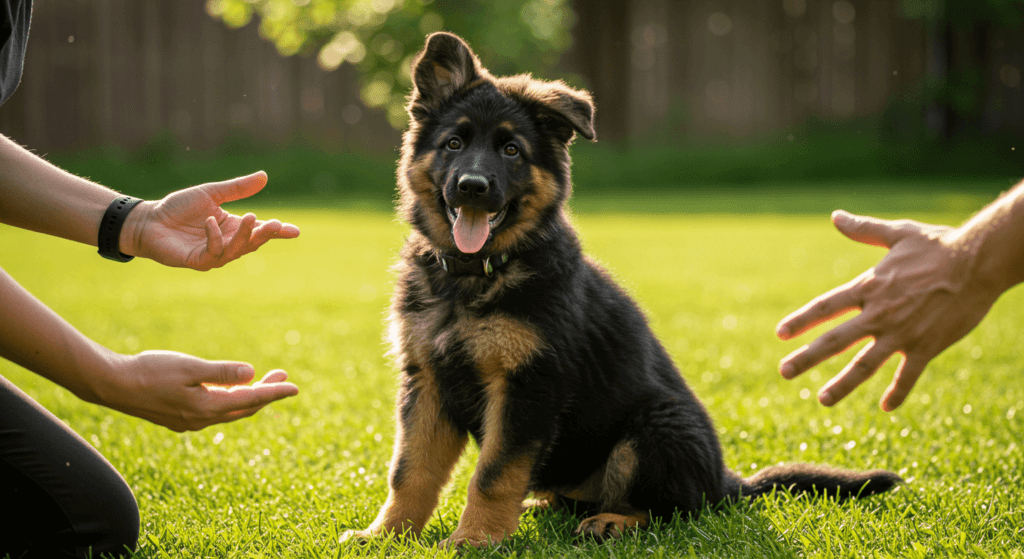Master German Shepherd puppy training with proven techniques for commands, behavior correction, and socialization. Raise a confident, obedient GSD in 12 weeks!
Table of Contents
| german shepherd best breed |
Introduction to German Shepherd Puppy Training
German Shepherd puppy training is a critical phase in shaping a well-mannered, confident, and obedient adult dog. At 10 weeks old, puppies like Chance—the spirited German Shepherd (GSD) featured in the video by American Standard Dog Training—are at a pivotal developmental stage. Their brains are highly receptive to learning, making this the ideal time to introduce foundational commands, socialization, and behavioral corrections. This 12,000-word guide dives deep into proven techniques, tools, and strategies to ensure your GSD thrives.
Why German Shepherd Puppy Training Starts at 10 Weeks
The first few months of a GSD’s life are formative. At 10 weeks old, puppies are curious, energetic, and eager to explore their environment. Early German Shepherd puppy training focuses on:
- Engagement: Building trust and focus through positive reinforcement.
- Basic Commands: Teaching sit, down, stand, and watch using hand signals (as demonstrated with Chance).
- Behavior Management: Correcting unwanted actions like dirt-eating or pulling on the leash.
Research from the American Kennel Club (AKC) emphasizes that puppies trained during this “critical socialization period” (8–16 weeks) develop stronger problem-solving skills and adaptability.
Essential Tools for German Shepherd Puppy Training
- Prong Collars: When used correctly, prong collars (like the Herm Sprenger brand shown in the video) provide gentle pressure to guide behavior without harming the puppy.
- Leash Pressure Training: Teaching puppies to respond to light leash cues prevents future pulling.
- Place Boards: These help puppies learn boundaries and calmness.
A study by the Journal of Veterinary Behavior highlights that tools like prong collars, when paired with positive reinforcement, reduce frustration in high-energy breeds like GSDs.
Step-by-Step German Shepherd Puppy Training Techniques
1. Hand Commands: The Foundation of Communication
As seen with Chance, hand signals precede voice commands. For example:
- Sit: Raise your hand palm-up.
- Down: Sweep your hand downward.
- Watch: Point to your eyes.
Repetition and consistency are key. Trainer Stan from American Overwatch Canine Services stresses fading hand signals gradually to introduce voice cues.
2. Correcting Unwanted Behaviors
Chance’s dirt-eating habit was addressed with a gentle scruff correction. The goal is to interrupt the behavior without causing fear. The Humane Society recommends pairing corrections with redirection (e.g., offering a toy).
3. Leash Pressure and Prong Collar Conditioning
- Flat Collar Training: Start with light pressure to teach directional cues.
- Prong Collar Transition: Use minimal pressure to guide movements like stand or heel.
Socialization and Advanced German Shepherd Puppy Training
By 12 weeks, puppies should experience:
- New Environments: Parks, busy streets, and homes.
- People and Animals: Controlled interactions to prevent fear or aggression.
The Association of Professional Dog Trainers (APDT) advises exposing GSDs to 100+ novel stimuli by 16 weeks.
Common Challenges in German Shepherd Puppy Training
- Pulling on Leash: Use the “stop-and-go” method to discourage pulling.
- Distraction Training: Gradually increase difficulty (e.g., practicing sit near a food bowl).
- Bite Inhibition: Teach gentle play using time-outs.
The Role of Diet and Health in Training
A balanced diet fuels focus. Brands like Royal Canin offer breed-specific formulas for GSDs. Regular vet check-ups ensure puppies are physically ready for training.
Case Study: Chance’s Progress in 2 Weeks
Chance mastered hand signals for sit, down, and place within two weeks. His trainer used:
- Food Motivation: High-value treats for engagement.
- Short Sessions: 5–10 minutes to match his attention span.
Conclusion: Raising a Well-Rounded German Shepherd
German Shepherd puppy training is a blend of patience, consistency, and adaptability. By starting early, using the right tools, and prioritizing engagement, you’ll raise a dog that excels in obedience and companionship.

